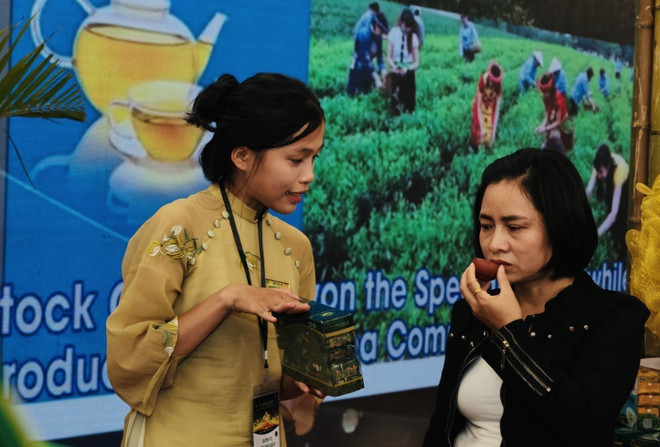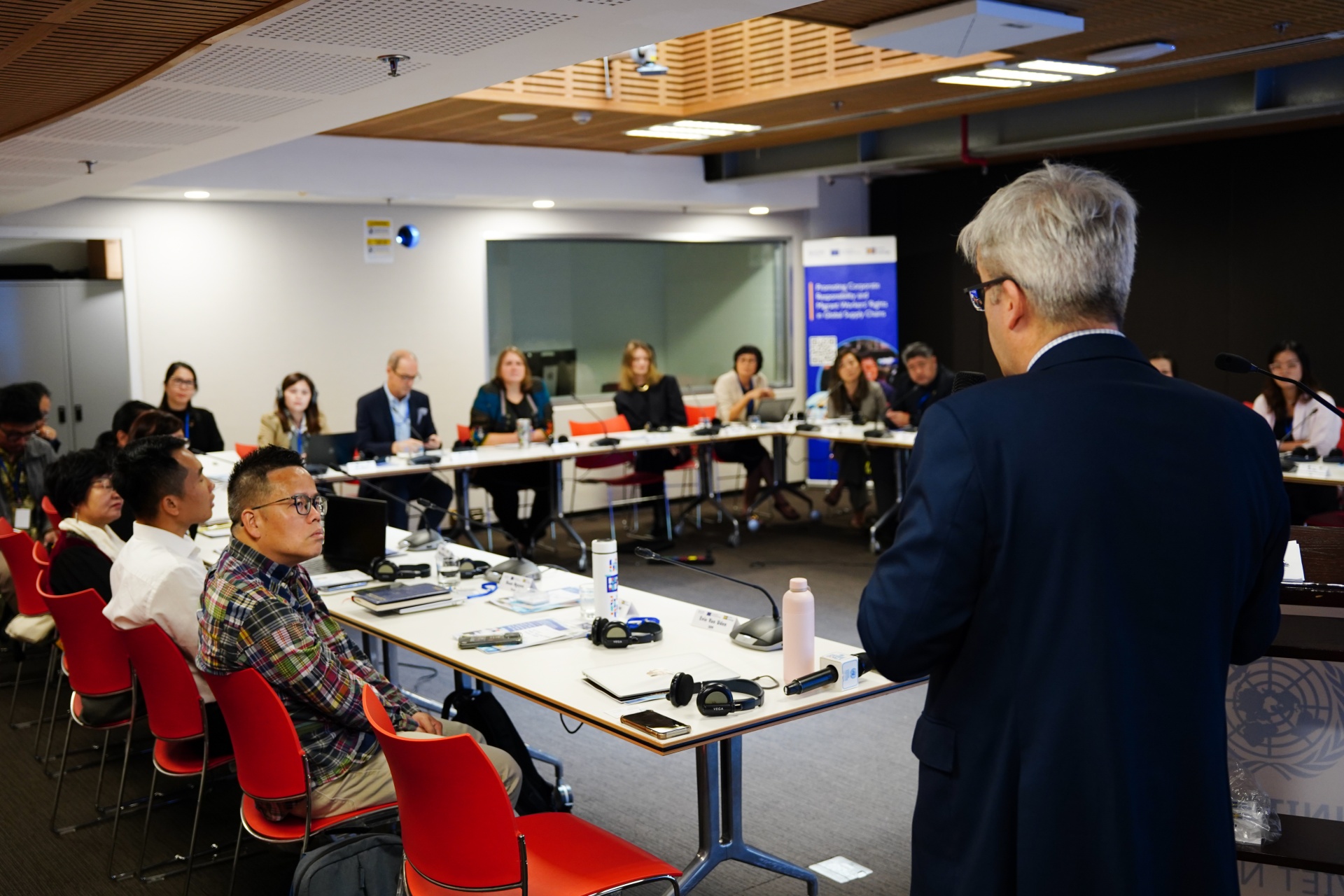Autumn Fair 2025 showcases Vietnam’s growing green consumption trend – Vietnam+ (VietnamPlus)

Report on the Autumn Fair 2025: A Catalyst for Sustainable Development in Vietnam
Introduction: Aligning Commerce with Sustainable Development Goals
- The Autumn Fair 2025, which commenced on October 26, demonstrated a significant public shift towards sustainable consumption, attracting large numbers of visitors from its opening day.
- The event served as a key platform for promoting products that align with several United Nations Sustainable Development Goals (SDGs), particularly those related to health, responsible consumption, and economic growth.
- High consumer demand for eco-friendly, safe, and natural products was a prominent feature, indicating a national trend towards sustainable lifestyles.
Advancing SDG 12: Responsible Consumption and Production
- The fair highlighted a growing consumer consciousness in Vietnam, with visitors actively seeking sustainable goods. This trend directly supports the core targets of SDG 12 by encouraging production methods and consumption patterns that are environmentally sound.
- The popularity of green and natural goods underscores a market-driven movement towards responsible consumption.
- According to business representatives, the event functions as a critical link between producers of sustainable goods and a receptive consumer base, thereby strengthening the green economy and fostering responsible supply chains.
Contributions to SDG 3 (Good Health and Well-being) and SDG 2 (Sustainable Agriculture)
- Exhibitors showcased products emphasizing health and natural ingredients, directly contributing to SDG 3.
- Thien Nhien Viet Import-Export Co., Ltd. presented a range of beverages and extracts made from natural ingredients like pennywort and perilla, which are produced without artificial flavorings or preservatives.
- Production under VietGAP standards ensures sustainable agricultural practices, aligning with the objectives of SDG 2.
- Mu Cang Chai Edible and Medicinal Mushroom Production Co., Ltd. offered products with ISO 2018 and three-star OCOP certification, guaranteeing quality, safety, and traceability for consumers.
Bolstering SDG 8: Decent Work and Economic Growth
- Market Expansion: The success of participating small and medium-sized enterprises (SMEs) demonstrates their potential to drive local economic growth and create decent work. The high sales volume reported on the first day indicates robust market viability.
- Export Success: Companies are successfully entering demanding international markets. Thien Nhien Viet exports to 28 countries, including Germany, the UK, France, and Japan, enhancing Vietnam’s global trade position in sustainable products. Mu Cang Chai Mushroom Co. has also established export channels to Taiwan (China).
- Brand Development: The fair provides a crucial platform for local brands to gain visibility and competitiveness, fostering entrepreneurship and creating economic opportunities that contribute to sustained, inclusive, and sustainable economic growth.
Analysis of Sustainable Development Goals (SDGs) in the Article
1. Which SDGs are addressed or connected to the issues highlighted in the article?
- SDG 12: Responsible Consumption and Production: The article’s central theme is the shift towards “healthy, sustainable, and environmentally friendly consumption.” It highlights the popularity of “eco-friendly products” and “Green, safe, and natural goods” at the Autumn Fair 2025, directly reflecting the principles of responsible consumption and production.
- SDG 8: Decent Work and Economic Growth: The article showcases the success of local small and medium-sized enterprises (SMEs) like “Mu Cang Chai Edible and Medicinal Mushroom Production Co., Ltd.” and “Thien Nhien Viet Import-Export Co., Ltd.” Their growth, high sales (“sold out several hundred kilogrammes of mushrooms”), and expansion into international markets (“exported to 28 countries”) contribute to economic growth and support entrepreneurship.
- SDG 3: Good Health and Well-being: The focus on “healthy products” that are “completely natural, with no added flavorings or preservatives” connects to promoting good health. The article states that “Vietnamese consumers are increasingly looking for green, safe, and healthy products,” indicating a growing public awareness of the link between consumption and well-being.
2. What specific targets under those SDGs can be identified based on the article’s content?
-
Under SDG 12 (Responsible Consumption and Production):
- Target 12.1: Implement the 10-Year Framework of Programmes on Sustainable Consumption and Production Patterns. The fair itself and the consumer trend it reflects (“Vietnam’s fast-growing shift toward healthy, sustainable, and environmentally friendly consumption”) are practical examples of implementing sustainable consumption patterns.
- Target 12.8: By 2030, ensure that people everywhere have the relevant information and awareness for sustainable development and lifestyles in harmony with nature. The fair acts as a “platform connecting producers and consumers,” raising awareness and promoting sustainable lifestyles. The consumer shift indicates that this awareness is growing.
-
Under SDG 8 (Decent Work and Economic Growth):
- Target 8.3: Promote development-oriented policies that support productive activities, decent job creation, entrepreneurship, creativity and innovation, and encourage the formalization and growth of micro-, small- and medium-sized enterprises. The success of the featured companies, which are expanding both “domestically and internationally,” exemplifies the growth of SMEs driven by innovation in green products.
-
Under SDG 3 (Good Health and Well-being):
- Target 3.4: By 2030, reduce by one third premature mortality from non-communicable diseases through prevention and treatment and promote mental health and well-being. The consumer demand for natural products “with no added flavorings or preservatives” and using “only natural sweeteners” is a preventive health measure, contributing to healthier lifestyles that can reduce non-communicable diseases.
3. Are there any indicators mentioned or implied in the article that can be used to measure progress towards the identified targets?
-
For SDG 12 Targets:
- Consumer Demand and Sales Volume: The article explicitly mentions “large crowds,” “overwhelming number of visitors,” and that one company “sold out several hundred kilogrammes of mushrooms.” This high demand and sales volume for sustainable products serve as a direct indicator of shifting consumption patterns (Target 12.1).
- Adoption of Sustainability Standards: The mention of certifications like “ISO 2018,” “three-star OCOP certification,” and production under “VietGAP standards” are clear indicators that producers are adopting sustainable practices.
-
For SDG 8 Targets:
- SME Market Expansion: The article provides specific data on market access. One company’s products are “now available in major supermarkets in Hanoi and Ho Chi Minh City and exported to Taiwan (China).” Another company’s products are “now exported to 28 countries.” This serves as a quantifiable indicator of SME growth and competitiveness.
-
For SDG 3 Targets:
- Availability of Healthy Products: The presence of these products in “major supermarkets” and their export to “demanding markets” implies an increased availability and market share of healthy, natural food options, which is an indicator of progress towards promoting healthier lifestyles.
4. Summary Table of SDGs, Targets, and Indicators
| SDGs | Targets | Indicators |
|---|---|---|
| SDG 12: Responsible Consumption and Production |
12.1: Implement sustainable consumption and production patterns.
12.8: Ensure people have relevant information and awareness for sustainable lifestyles. |
– High consumer turnout and sales volume of eco-friendly products at the fair (“large crowds,” “sold out several hundred kilogrammes”). – Number of companies adopting sustainability certifications (“ISO 2018,” “OCOP certification,” “VietGAP standards”). |
| SDG 8: Decent Work and Economic Growth | 8.3: Promote policies that support entrepreneurship and the growth of micro-, small- and medium-sized enterprises. | – Number of domestic and international markets accessed by local SMEs (availability in “major supermarkets,” export to “28 countries”). |
| SDG 3: Good Health and Well-being | 3.4: Reduce premature mortality from non-communicable diseases through prevention. | – Increased market availability and consumer preference for natural and healthy products (“completely natural, with no added flavorings or preservatives”). |
Source: en.vietnamplus.vn
What is Your Reaction?
 Like
0
Like
0
 Dislike
0
Dislike
0
 Love
0
Love
0
 Funny
0
Funny
0
 Angry
0
Angry
0
 Sad
0
Sad
0
 Wow
0
Wow
0


















































.jpg.webp?itok=0ZsAnae9#)





/environment-climate-change-and-health-(ech)/water-sanitation-hygiene-and-health-(wsh)/landfill-tuvalu-36092.tmb-1200v.jpg?sfvrsn=5c21fe40_1#)


















